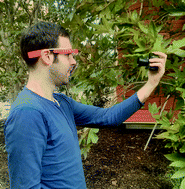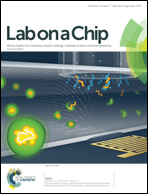Quantification of plant chlorophyll content using Google Glass
Abstract
Measuring plant chlorophyll concentration is a well-known and commonly used method in agriculture and environmental applications for monitoring plant health, which also correlates with many other plant parameters including, e.g., carotenoids, nitrogen, maximum green fluorescence, etc. Direct chlorophyll measurement using chemical extraction is destructive, complex and time-consuming, which has led to the development of mobile optical readers, providing non-destructive but at the same time relatively expensive tools for evaluation of plant chlorophyll levels. Here we demonstrate accurate measurement of chlorophyll concentration in plant leaves using Google Glass and a custom-developed software application together with a cost-effective leaf holder and multi-spectral illuminator device. Two images, taken using Google Glass, of a leaf placed in our portable illuminator device under red and white (i.e., broadband) light-emitting-diode (LED) illumination are uploaded to our servers for remote digital processing and chlorophyll quantification, with results returned to the user in less than 10 seconds. Intensity measurements extracted from the uploaded images are mapped against gold-standard colorimetric measurements made through a commercially available reader to generate calibration curves for plant leaf chlorophyll concentration. Using five plant species to calibrate our system, we demonstrate that our approach can accurately and rapidly estimate chlorophyll concentration of fifteen different plant species under both indoor and outdoor lighting conditions. This Google Glass based chlorophyll measurement platform can display the results in spatiotemporal and tabular forms and would be highly useful for monitoring of plant health in environmental and agriculture related applications, including e.g., urban plant monitoring, indirect measurements of the effects of climate change, and as an early indicator for water, soil, and air quality degradation.


 Please wait while we load your content...
Please wait while we load your content...